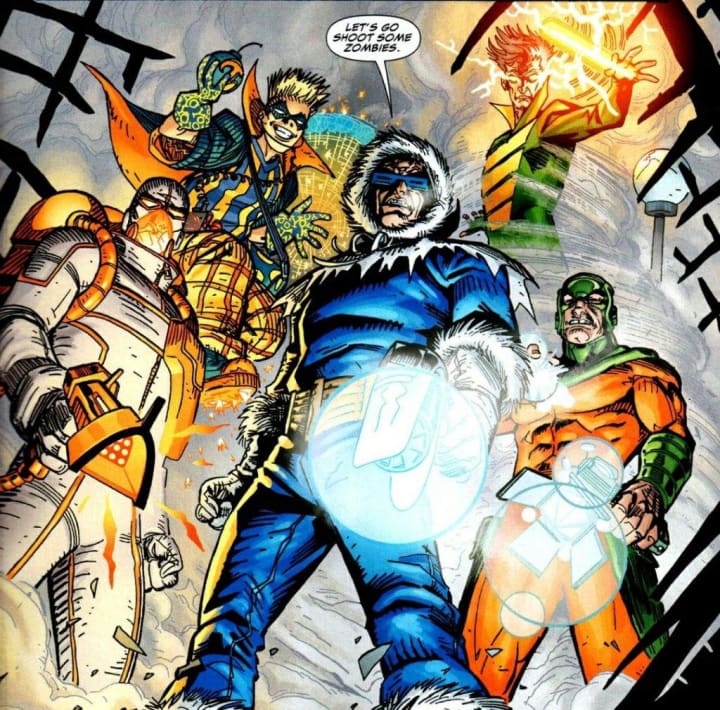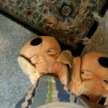
Most of the superheroes that we know and love today have existed in comics for decades on end. During this time, new characters are always introduced to keep their stories fresh. More often than not, these new characters tend to be antagonists.
After all, the best way to give a hero something to do is to put him or her against a revolving roster of villains. This will always give the reader something to look forward to as they wait with baited breath to see how their favorite hero will overcome this new threat.
Eventually, a hero will amass a significant rogues gallery and from time to time, these villains will align with one another in order to take down their common or achieve a shared goal. We have seen the likes of The Brotherhood of Mutants and The Sinister Six in Marvel or The Injustice League and Suicide Squad in DC among many others.
However, not every villainous team-up will live forever in history and a few have rather unfortunately fallen by the wayside or are just overlooked. In this article we shall explore 5 underrated supervillain team-ups in comics.
5. The Rogues: The Flash

Primarily antagonists of The Flash, The Rogues are an on-again-off-again association of The Flash’s most prominent earth dwelling enemies. Led by Captain Cold, the Rogues have included Heatwave, Mirror Master, Weather Wizard and Captain Boomerang among a revolving door of recurring Flash villains.
Although an undoubtedly villainous group, The Rogues are not pure evil (or are at least smart to not push things too far). In fact they are notable for having a very strict code of honor to which its members must abide. A Rogue cannot assume the identity of a fellow member while they are still alive, they must keep away from drugs and most prominently, are not allowed to kill unless absolutely necessary. The Rogue’s are completely barred from killing women and children, while they do their best to avoid killing superheroes.
Due to Captain Cold’s strict leadership and the group’s code of honor, The Rogue’s aims are generally centered around making easy money. While illegal, it usually does not involve others being permanently harmed by their misdeeds. In many ways, The Rogues are basically a support group for villains to get together and do what they do best in a somewhat controlled way. The Flash himself has appreciated The Rogues for never trying to push the envelope and The Rogues themselves have occasionally defended Central City from other outside threats.
For those who say that there is no honor among thieves, The Rogues would beg to differ. They have each other’s backs and play their game by the rules that they set. Until they hit the jackpot of all heists and are on easy street forever, they will not let any hero or villain stand in their way.
4. The Hellfire Club: X-Men

The core of X-Men has always been the conflict between two opposing forces who are actually working towards the same goal. Both Charles Xavier’s X-Men and Magneto’s Brotherhood of Mutants want to end the discrimination against their kind. The X-Men seek acceptance and integration into society while the Brotherhood believes that as a superior species, mutants ought to rule over humans to end the prejudice against them.
The Hellfire Club, on the other hand, operates very differently. Led by the Black King, Sebastian Shaw, the many members of the Hellfire Club do not face the same discrimination as other mutants in the series. They are generally wealthy and well-connected individuals who keep their identities as mutants secret. In fact, some members of the club (along with the true nature of the club itself) are not known to the public at large.
The Hellfire Club have no interest in the struggle to end the prejudice against mutants and have at times taken advantage of anti-mutant sentiments to further their own goals. With connections to governments, corporations and other influential bodies, The Hellfire Club’s aim is to rule over both humans and mutants from behind the scenes.
Unlike the Brotherhood who are antagonists who fight for a genuine cause, The Hellfire Club (aside from Emma Frost) are far more malicious and irredeemable. As wealthy, influential mutants, Sebastian Shaw and his allies could have used their positions to aid the fight against mutant prejudice. Instead, they choose to lurk beneath the shadows to prey on any vulnerable individual to further their own hedonistic goals.
3. The Monster Society of Evil: Captain Marvel/Shazam

Led by the two inch worm creature, Mister Mind, the Monster Society of Evil was a collection of Shazam’s greatest foes. With the likes of Ibac, King Kull, Doctor Sivana and Black Adam amongst its ranks, The Monster Society of Evil was not only a threat to Shazam and Fawcett City but to the world at large.
Individually, each of these villains have posed a difficult challenge and together, they were a force of unspeakable evil. In fact at one time, the group even had Adolf Hitler himself as a member. Today, the group is featured far less prominently in comics and other adaptations but they have left a legacy that has often gone understated.
Prior to The Monster Society of Evil, every villainous group in comics were made up of characters who were created specifically for that storyline. The MSE changed that by making almost every member of the group a villain that Shazam had previously fought. Thus, the MSE essentially created the trope of the alliance of established villains who were bent on revenge.
Basically, it was The Monster Society of Evil that paved the way for iconic groups such as the Sinister Six or the Injustice League. They essentially invented one of the most iconic tropes in comic book history and for that alone, are more than deserving of greater recognition.
2. The Prime Movers: Acts of Vengeance

Led by Loki, The Prime Movers were made up of Dr. Doom, Magneto, The Wizard, Red Skull, The Kingpin and The Mandarin. Following his defeat at the hands of The Avengers, Loki decided to put together a team of some of Marvel’s deadliest villains in order to defeat The Avengers, Spiderman, The X-Men and The Fantastic Four in one fell swoop. It should also be mentioned that Loki had also tried to recruit Apocalypse, Cobra, Namor and The Mad Thinker but was unsuccessful.
Aside from the sheer menace that would come from seven of Marvel’s greatest villains, The Prime Movers’ plan of attack was nothing short of genius. Organizing a breakout of other villains from The Vault, The Prime Movers decided that the best way to beat the heroes was to have them face villains that they were not used to fighting. For example, Iron Man villain, The Mandarin would fight the X-Men, X-Men villain, Juggernaut would fight Thor and Thor villains, The Wrecking Crew would fight Iron Man.
While this tactic of division and confusion would initially prove to be successful, The Prime Movers’ biggest weakness were their own individual egos. Soon, they would begin to squabble amongst themselves. Holocaust survivor Magneto could not bear to work with the Nazi Red Skull for long and soon betrayed him. Loki and The Mandarin would also turn on each other while Dr. Doom would draw the ire of the entire group for sending a Doombot in place of his actual self. The Wizard was captured in the midst of all this and realizing that the alliance was not sustainable, The Kingpin left the group.
The Prime Movers were the prime example of what happens when seven combustible egos are forced to a boiling point. Despite having the ideal plan to achieve victory, their poor teamwork and inability to work with one another, eventually led to their downfall. It goes to show that sometimes a villain’s biggest weakness is themselves.
1. The Legion of Doom: Justice (2005)

One of Alex Ross’ many comic book masterpieces, 2005’s Justice was a reimagining of the 70s Superfriends TV show, redone with a grittier, more modern story. Keeping with the theme of a callback to the TV show, Justice’s Legion of Doom featured every member of the group from the Superfriends show with the addition of Metallo, Clayface, Parasite, Poison Ivy and Black Adam.
In this story, Lex Luthor leads The Legion of Doom on a mission to save the world. Each of the villains suffer from the same recurring dream of a nuclear armageddon that the Justice League are unable to prevent. Thus, they have decided to prevent this disaster themselves by using their powers to tackle various global problems.
Poison Ivy puts an end to world hunger, The Toyman builds prosthetic limbs for people, The Scarecrow cures various diseases and Captain Cold brings water to a barren desert. In reality, these dreams are the work of Lex Luthor and Gorilla Grodd to prompt these villains to save the world in order to sway public opinion against the Justice League. Throughout this entire time, The Joker is purposely excluded from joining the group
With the villains now recognised as the world’s saviors and the public turning on the Justice League, Luthor sends the rest of the Legion of Doom to defeat each member of The League. At the same time, Brainiac tries to mind control both The Legion and The League in order to fulfill his own plan of turning the world into robots.
Once again, it is a case of a severe clash of egos that led to the failure of a seemingly fool proof plan, Luthor and Grodd’s manipulation of the rest of the group and Brainiac’s hidden agenda eventually caused The Legion of Doom to turn against one another. In many ways, it was a rather classic downfall for the villains of a story that paid tribute to tales from decades past.
That does it for this list. If you made it this far, let me just say how appreciative I am of you taking the time to read this! As with most lists of this nature, there will always be a bit of personal preference as to what one would consider underrated.
So please feel free to disagree with me and share your thoughts if they are different. I really love hearing them. Until then, take care!
About the Creator
Isa Nan
Written accounts of life, death and everything in between






Comments
There are no comments for this story
Be the first to respond and start the conversation.